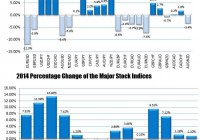iPath Natural Gas ETN Is A Broken Product
ETF and ETN investors should avoid broken products. I have repeated this caution numerous times over the years. Upon hearing this warning, most investors want to know what a broken product is. Once they understand the definition, they quickly grasp the danger. ETFs and ETNs are unique securities. The primary feature that differentiates them from other investment vehicles is the ability to create and redeem shares, typically through an in-kind exchange process. Another key feature is the publishing of the underlying portfolio’s value throughout the trading day. The two features combined allow market makers to keep the trading price very close to the value (often called the Intraday Value or the iNAV). This is the “promise” behind ETFs and ETNs, and investors expect these products to live up to it. However, sometimes the share creation mechanism is suspended or terminated for a given product, and that is when it becomes a broken product. Without a viable share creation process, an ETF or ETN can trade like a closed-end fund with price premiums. The typical retail investor does not have an easy way of knowing if a product is broken or not, and that is where the danger lies. It could be trading at a substantial premium, a premium that could disappear instantly. This is not just a theoretical problem; it is very real and happening today. You are probably aware that crude oil prices have been falling for a number of months. More recently, natural gas prices plunged. ETFs and ETNs tracking natural gas fell right along with the underlying commodity. Last week, the United States Natural Gas Fund (NYSEARCA: UNG ) dropped 12.5%. The leveraged ProShares Ultra Bloomberg Natural Gas ETF (NYSEARCA: BOIL ) was whacked for a 22.6% loss. However, the iPath DJ-UBS Natural Gas Total Return Sub-Index ETN (NYSEARCA: GAZ ), an unleveraged product tracking the same index as BOIL, gained 5.9%. The reason for this is because GAZ is a broken product. On August 21, 2009, Barclays “temporarily suspended” the creation unit process for GAZ . More than five years later it is still suspended, straining the credibility of the word temporarily. I’m willing to bet most investors are unaware GAZ is broken. Without the ability to create and redeem units of GAZ, it is impossible for market makers to keep the trading price near the net asset value (“NAV”). The NAV of GAZ went from $1.9182 to $1.5874 per unit last week, a plunge of 17.2%. The price went the other way, increasing from $2.02 to $2.14. GAZ started the week trading at a 5.3% premium and closed with a 34.8% premium. The premium narrowed slightly earlier this week, but it was more than 36% at the close on Wednesday. Anyone buying GAZ today is far more than it is worth. This is not a traditional liquidity problem, as GAZ has averaged more than 100,000 shares a day recently. This high volume suggests that many participants are unaware of its broken product status. One day, regulators may require investors be informed they are buying a broken product by requiring a ticker symbol suffix or some other means. Until then, be careful out there, and don’t get caught owning a broken product when the premium disappears . Disclosure covering writer, editor, and publisher: No positions in any of the securities mentioned. No positions in any of the companies or ETF sponsors mentioned. No income, revenue, or other compensation (either directly or indirectly) received from, or on behalf of, any of the companies or ETF sponsors mentioned.
